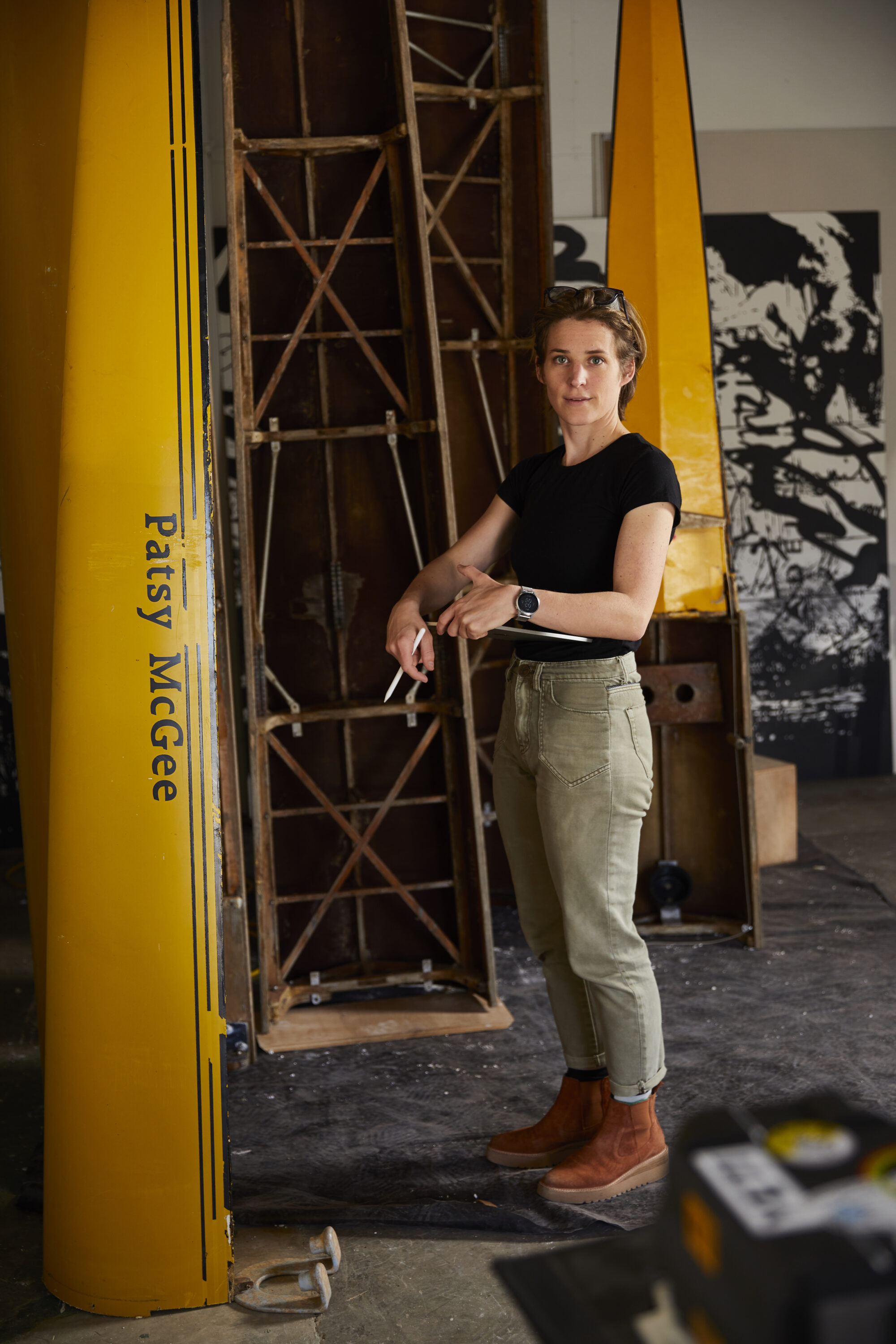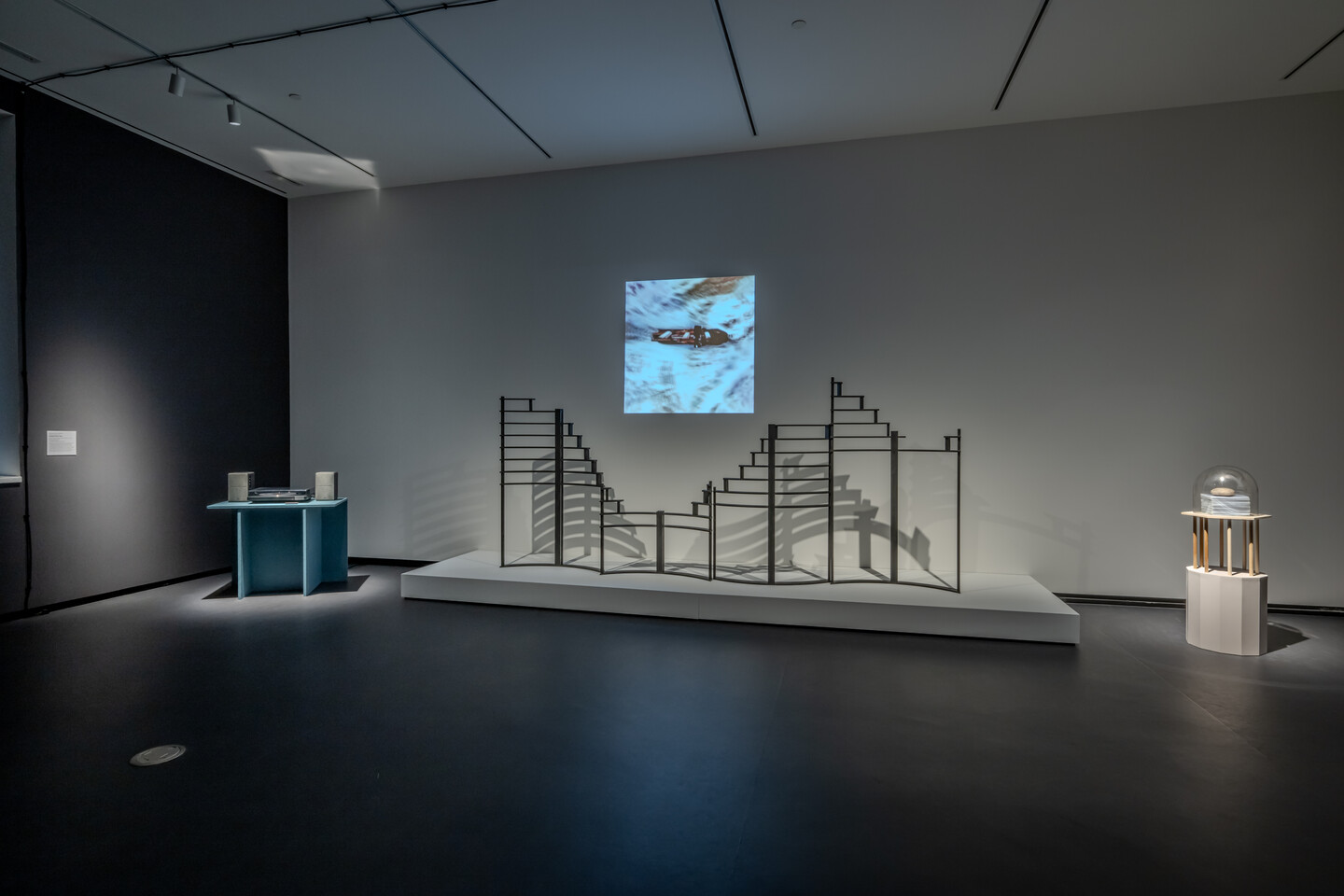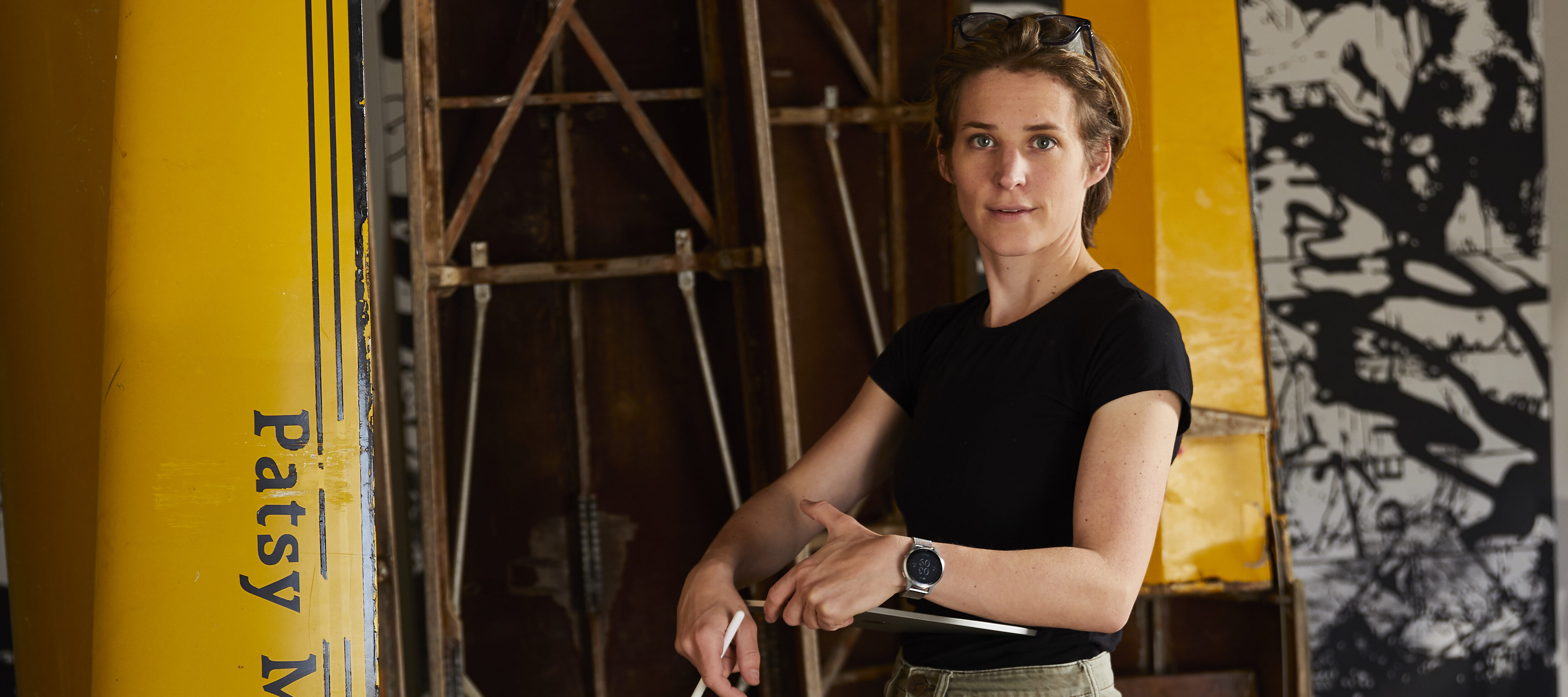The seventh installment of NMWA’s Women to Watch exhibition series, New Worlds, is presented by the museum with the integral partnership of our national and international outreach committees.
The exhibition showcases 28 contemporary artists who respond to our extraordinary times—the global pandemic, advocacy for social reform, and political division—by reimagining the past, presenting alternate realities, and inspiring audiences to create different futures. We spoke with some of the participating artists about their featured work and practice.
Artist: Marianna Dixon Williams
Nominating Committee: Georgia Committee

1. What themes does your work in New Worlds address?
My practice considers how we document environmental impact, loss, and growth. It is an acknowledgment of the land we inhabit and a recognition of the impermanence of life. My multi-channel installation for New Worlds displays a collection of records created from field recordings in the arctic, which erode as they are played; a video documenting an abandoned Russian coal mining settlement; and a group of “glacial erratics” within a “hanging valley.”
2. Is this work representative of your oeuvre? How does it fit into your larger body of work?
In my work, I explore environmental sensing through audio, create samples of natural systems in exhibition spaces through digital and physical construction practices, and re-design and build speculative tools by which we try to understand and navigate this world. I am interested in using environmental metaphors in my work to consider my relationship to my identity as an LGBTQ+ person and my home in the Southeast, as well as my relationship to global climate.
Today we face a landscape of environmental sounds that risks forgetting unless recorded, and we cannot assume that we are protected from the collapse of our ecosystems. By telling stories about this world through the lens of our senses and using data gathered from this world, my work aims to connect our cultural relationships to our perception of the issue of climate change, its past, and its involvement in our future.
3. As an artist, what are your essential materials and/or tools for building a new world?
I employ a DIY toolbox of handmade electronic objects and traditional recording devices to navigate the physical landscape. I use these tools to speak to what is felt, what is subconscious, or what can’t be represented directly in other materials. These materials can be activated by someone in the gallery space, bringing them in conversation. This activation can bridge expectations about old conversations with our fresh, new input.

4. Did any books, music, film, news, or other art inform your work in this exhibition?
No work directly influenced my work for New Worlds, but I am constantly researching, reading, and watching. Since my MFA I’ve held a deep love for Fiona Raby and Anthony Dunne’s Design Noir: The Secret Life of Electronic Objects (2001), Madeline Schwartzman’s Seeing Yourself Sensing: Redefining Human Perception (2011), and the Museum of Modern Art’s Design and the Elastic Mind (2008) exhibition catalog.
For this work, and to supplement the work I completed in the Arctic Circle in 2013, I studied glacial erratics and the landscape of glacial valleys. To find these firsthand, I did quite a bit of ice hiking in the northeastern U.S.!
5. How have the events of the past several years—the global pandemic, increased advocacy for social reform, and striking political division—changed or challenged your practice?
My work is site-specific, activated by community, and informed by landscape. Reframing the senses through media is a way for me to find a shared space in which we can start difficult conversations. Reality is different depending on where you get your media. My news sources here in Georgia are different from my grandmother’s news sources in the same Georgia. I am thinking about this disconnect more and more these days. Crowd-sourced media, contributed media, and the “all at once-ness” of media transforms how I archive and build work. It also helps me recognize patterns in consciousness and experience that I can translate into my work.
6. If you could travel to any time, past or future, when and where would you go? Why?
I loved being a kid in the ‘90s. For me, this was the era of dial-up, skateboards, RadioShack, untracked after-school exploration and the AM/FM radio. When I remember that time, I think about light, filtering into my grandmother’s kitchen as I studied, flowing through the trees outside my window onto my bed’s soft white linen at the start of the day. If I could return, I’d tell kid me that we learn about ourselves by bumping up against something solid.
New Worlds: Women to Watch 2024 is on view at the National Museum of Women in the Arts from April 14 to August 11, 2024.
